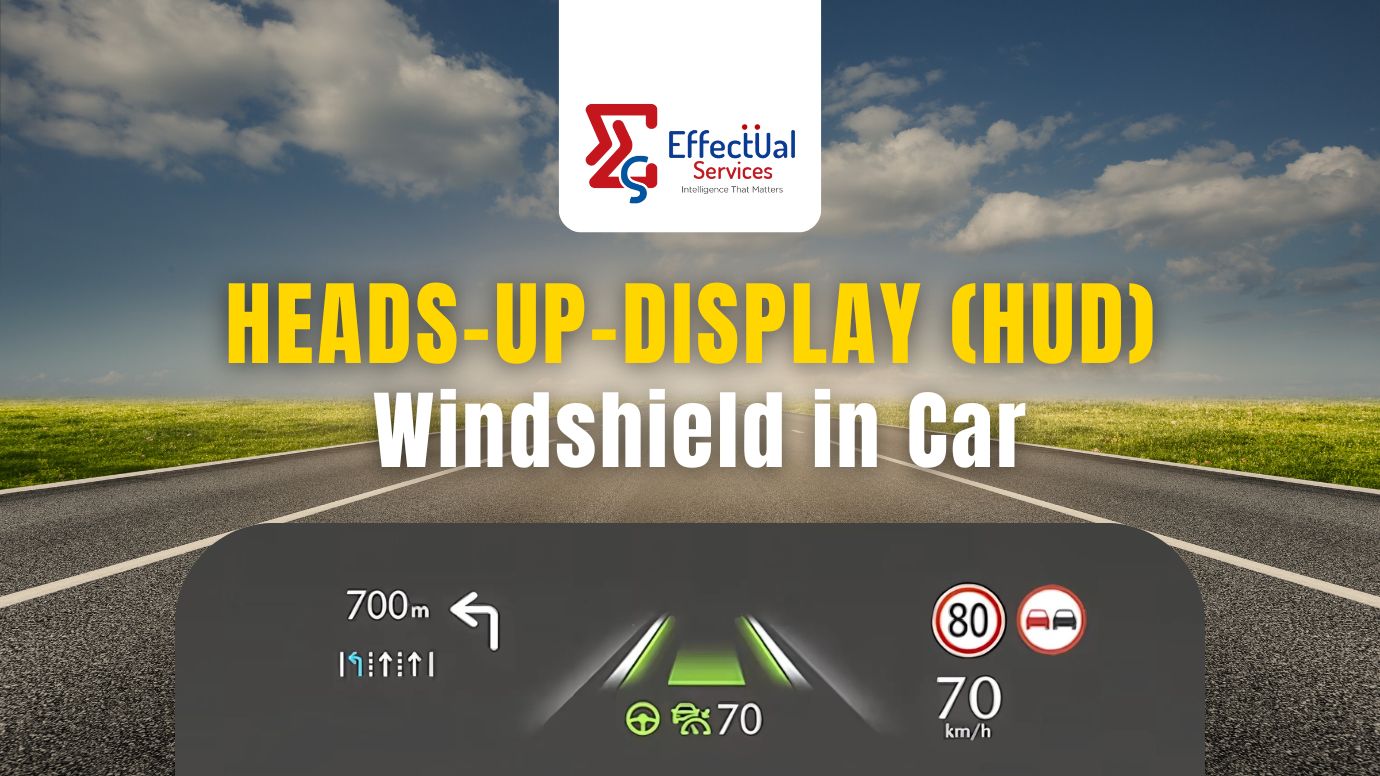
Heads-Up-Display (HUD) Windshield in Car
A heads-up display, also known as HUD, projects images onto the windshield of a vehicle. This eliminates the need for the driver to take their eyes off the road. HUD is a technology that may be integrated into your vehicle. It displays the same information that you would obtain from your dashboard. Its primary purpose is to keep your attention directed forward and on the road.
The windshield HUD system has three main components: the projector, the combiner, and the control module. The projector is mounted on the dashboard of the car and produces the image that is projected onto the windshield. The combiner is a small piece of glass that is positioned between the projector and the windshield at a precise angle to reflect the image onto the windshield. The control module is responsible for processing the information and ensuring it is displayed correctly on the windshield.
The HUD unit uses a system of mirrors and lenses to display the information on the windshield. The information is projected onto the combiner, which reflects the image onto the windshield. The projector unit contains a light source, lens, and mirror. The light source illuminates the image, the lens focuses the image, and the mirror reflects the image onto the combiner.
Different Types of Heads-Up Display (HUD)
- Projection-based head-up display: Projection-based HUD projects information such as speed, turn-by-turn navigation, rev counter, and real-time fuel usage. More recently, lasers have been used in place of LED lights for this purpose. Using this setting allows you to have a very clear final image. Moreover, there is very little to no light bleed even while driving in settings that are darker. Nevertheless, the implementation of this system is more difficult and expensive.
- Reflection-based head-up display: Reflection-based HUD systems make use of a digital display that provides the needed information (by utilizing both positive and negative spaces) reflecting on a glass screen specially created for the purpose. Compared to the projection-based system, this one lacks sharpness and has a greater amount of light bleed when utilized in dark surroundings. The best thing about this system is that it can be installed in most vehicles as a plug-and-play solution and does not require a great deal of calibration. Also, it is comparatively less expensive than a Projection-based head-up display. That’s the reason it has become one of the most favoured aftermarket HUD accessories.
Market Outlook
The global automotive HUD market is expected to surpass $5.5 billion by 2030, growing at a CAGR of over 20%. This growth is fueled by increasing adoption in both premium and mid-segment vehicles, and the race toward autonomous driving and AR-enhanced experiences.
Market Drivers
- Driver Safety: HUDs reduce distraction by projecting critical info directly into the driver's line of sight — navigation, speed, ADAS alerts, and more.
- Connected Cars & ADAS: Integration with ADAS and vehicle telematics is pushing OEMs to adopt HUDs as standard features.
- Consumer Demand for Tech: Today’s drivers expect smart, intuitive interfaces — and HUDs deliver a futuristic, yet functional experience.
Challenges
- High Cost of development and integration, especially in entry-level cars.
- Technical Barriers: Ensuring visibility in all lighting conditions, accommodating multiple driver heights, and seamless AR integration.
- Regulatory & Safety Standards: Varying global standards can delay deployment.
Startup & Innovation Spotlight
- WayRay (Switzerland) is pioneering holographic AR HUDs, bringing sci-fi to real roads.
- Envisics (UK) uses dynamic waveguide tech for sharper, safer projections in real time.
- HUDWAY (USA) is democratizing HUDs with affordable aftermarket solutions, making the tech accessible to the mass market.
As HUD windshield technology matures, we’ll see AR navigation, real-time hazard detection, and V2X communication all displayed within your line of sight — redefining how we drive.
About Effectual Services
Effectual is a global knowledge group that supports the research and innovation needs of various R&D groups. We work across a wide range of industries to find out technology components that are synergistic when bundled together to deliver a superior solution.
We assist corporations in understanding the markets involved in a particular technology and the latest developments in the technology area, while also suggesting novel technological solutions to a challenging statement. They achieve their research needs through us by quick and promising solutions backed with scientific data that could add value to their business needs.




